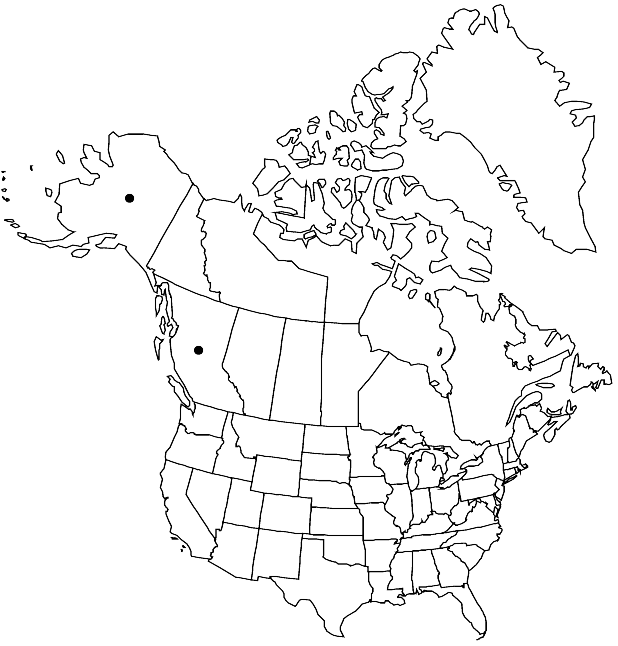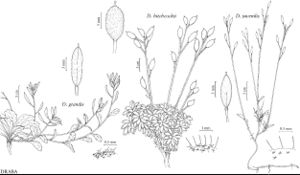Draba grandis
Syst. Nat. 2: 355. 1821.
Perennials; caudex simple or branched (fleshy, with persistent leaf bases); not scapose. Stems (decumbent), unbranched, (0.2–)0.5–2.7(–3.7) dm, pubescent throughout, trichomes 2–4-rayed, 0.05–0.2 mm. Basal leaves rosulate; long-petiolate; petiole (winged, (1–)4–15 cm), often not ciliate (or ciliate to blade apex, trichomes simple, 0.3–0.8 mm); blade (somewhat fleshy), oblanceolate to spatulate or obovate, (1–)2–11(–17) cm × (5–)8–30(–45) mm, margins often coarsely dentate, (pubescent as petiole), surfaces usually pubescent, abaxially with stalked, 2–4-rayed trichomes, 0.05–0.25 mm, adaxially similar, or also with simple and long-stalked, 2-rayed trichomes, to 0.8 mm, rarely glabrescent, with mostly simple and 2-rayed trichomes. Cauline leaves 2–12(–16); sessile or petiolate; blade oblanceolate to obovate, margins dentate or entire, surfaces pubescent as basal. Racemes 5–26(–32)-flowered, ebracteate, elongated in fruit; rachis not flexuous, pubescent as stem. Fruiting pedicels horizontal to divaricate-ascending or ascending, usually straight, rarely curved upward, (5–)10–22(–27) mm, pubescent, trichomes 2–4-rayed (0.05–0.3 mm), sometimes with simple and spurred ones. Flowers: sepals broadly ovate, 3–4 mm, pubescent, (trichomes simple and short-stalked, 2-rayed); petals yellow, oblanceolate to spatulate, 4.5–7 × 1.8–3 mm; anthers oblong, 0.7–1 mm. Fruits oblong to lanceolate, or ovate to suborbicular, slightly twisted or plane, flattened, (6–)10–20(–25) × 4–7(–9) mm; valves glabrous; ovules 24–52 per ovary; style (0.2–)0.4–1.6(–2) mm. Seeds ovoid, 1.4–2 × 0.8–1.2 mm. 2n = 36.
Phenology: Flowering May–Jul.
Habitat: Rocky bluffs above salt-water beaches, loamy seaside banks, sea bird rookeries, coastal herbaceous tundra and sandy blowouts
Elevation: 0-50(-200) m
Distribution

B.C., Alaska, e Asia (Kuril and Ratmanov islands, Russian Far East).
Discussion
Almost all recent North American authors have used the name Draba hyperborea for this species. A. N. Berkutenko (1995) clearly showed that the type of that name belongs to an entirely different species that she placed in the genus Schivereckia Andrzejowski ex de Candolle. Draba grandis thus becomes the correct name for the North American taxon. Except for its fleshy leaves, Nesodraba is indistinguishable morphologically and molecularly from other species of Draba.
Selected References
None.
